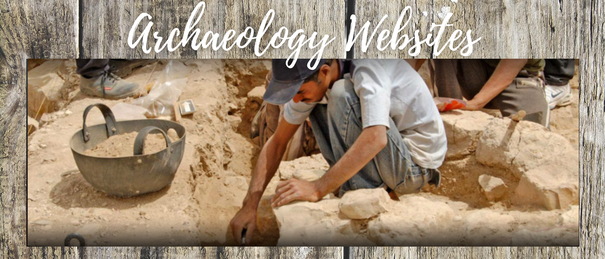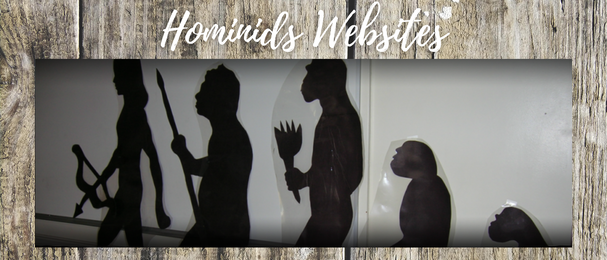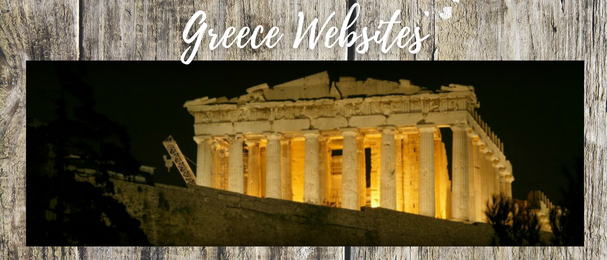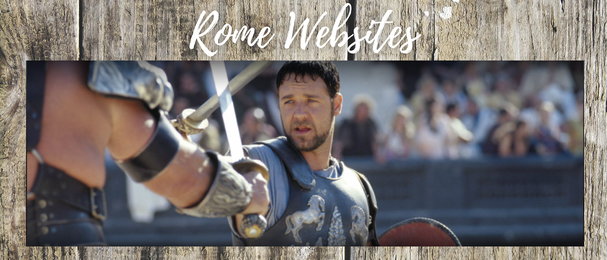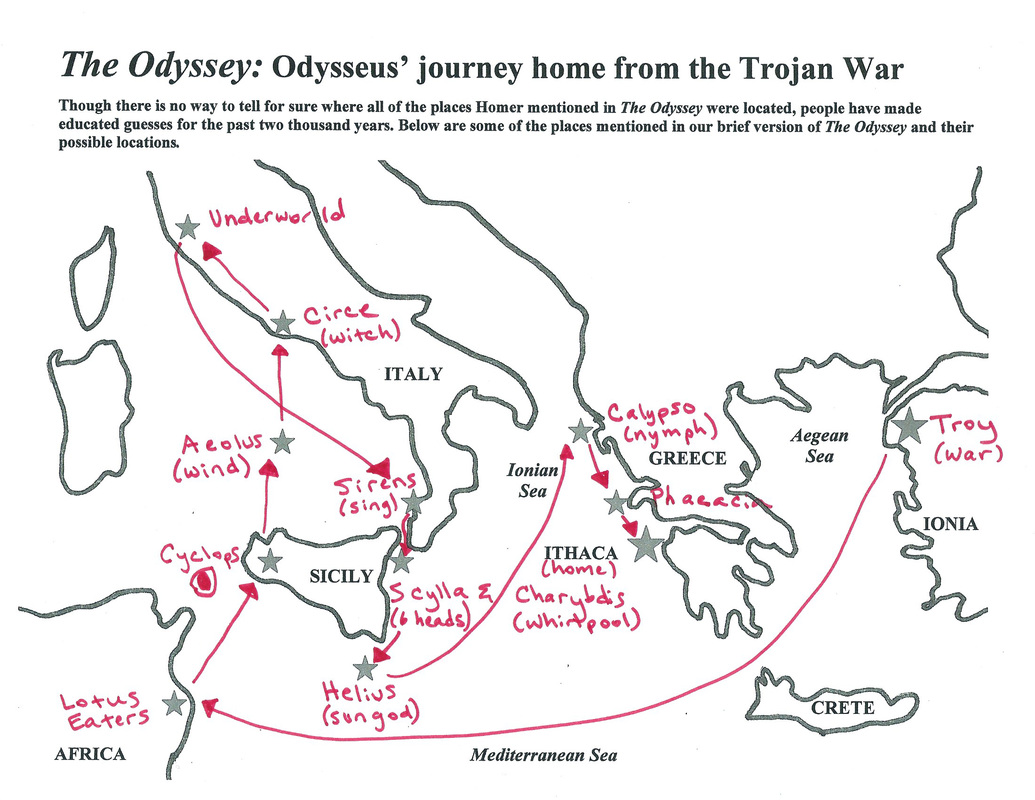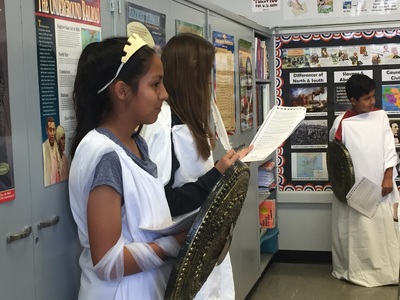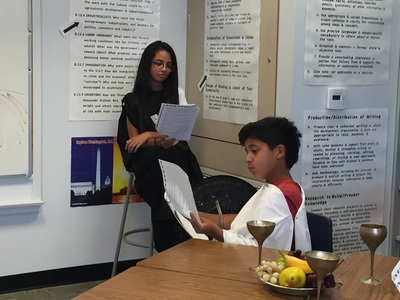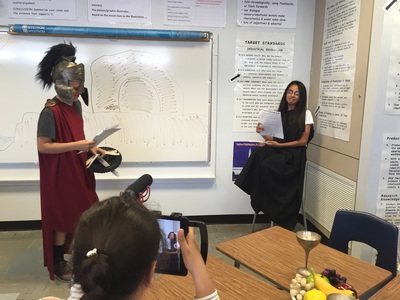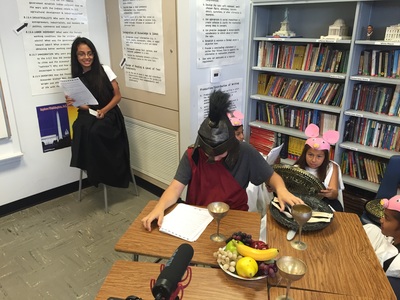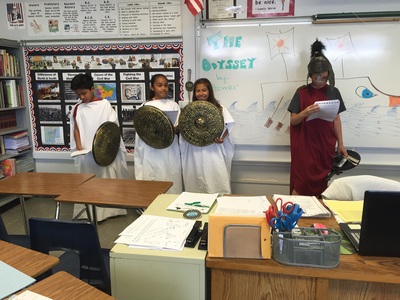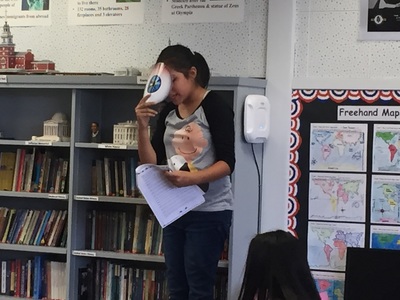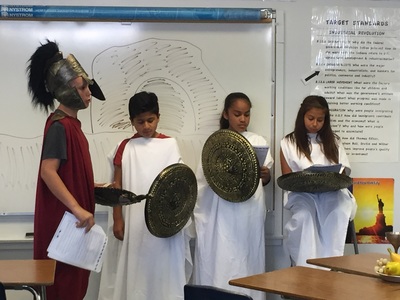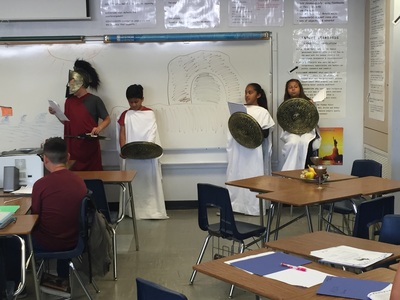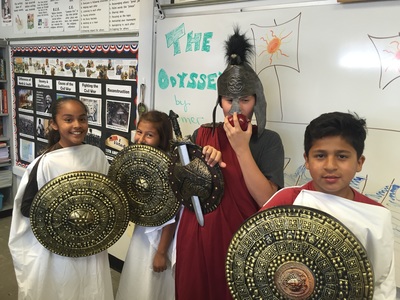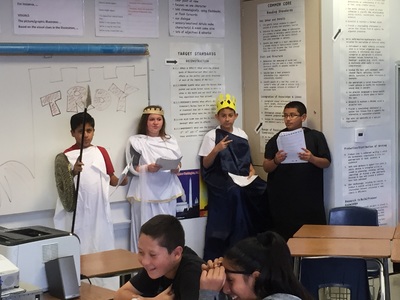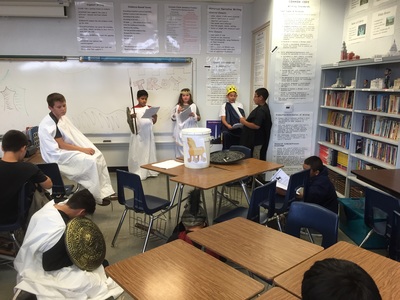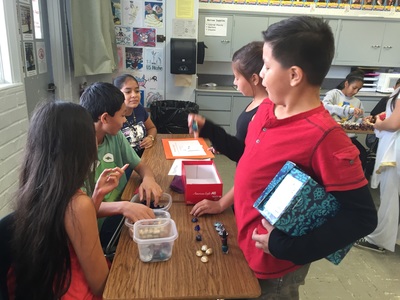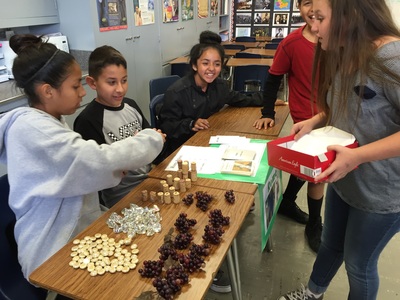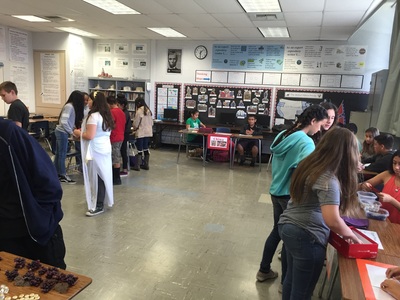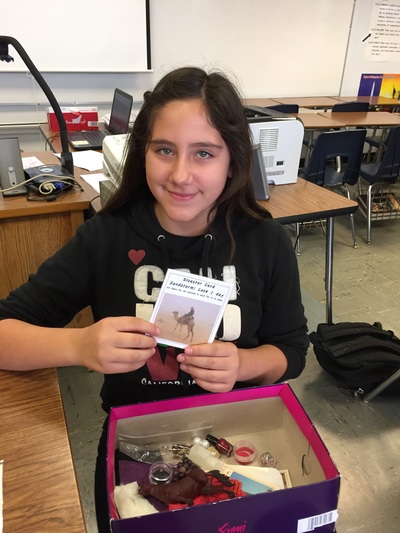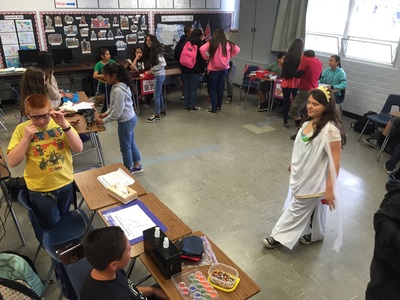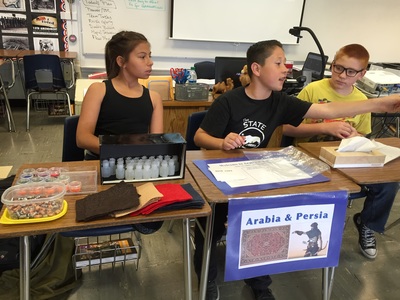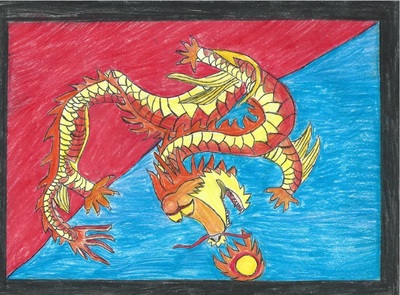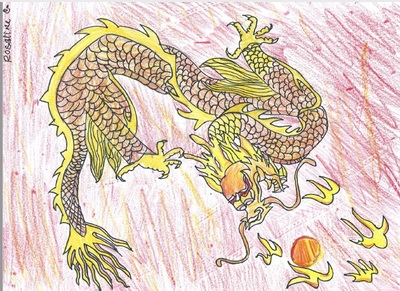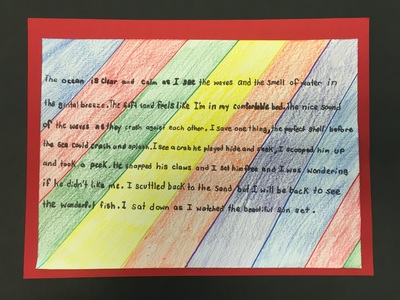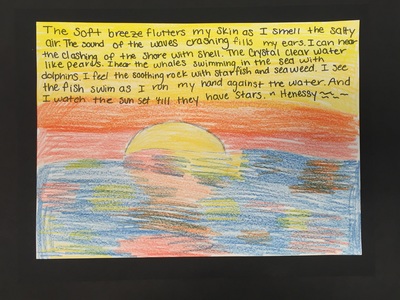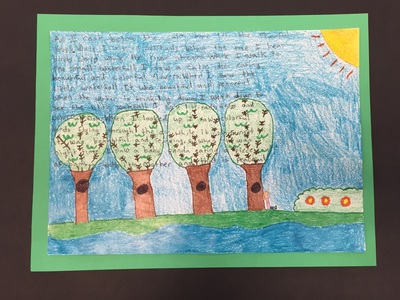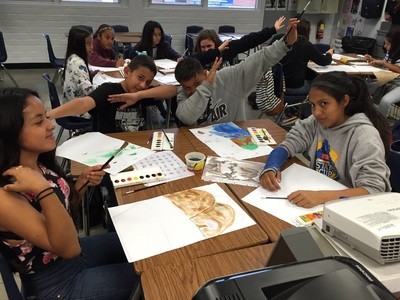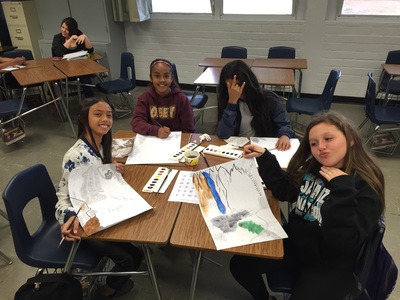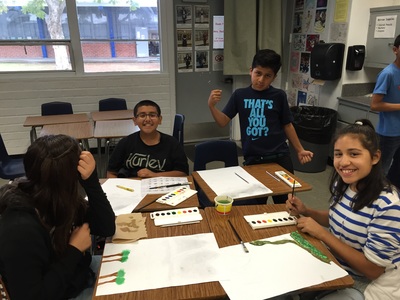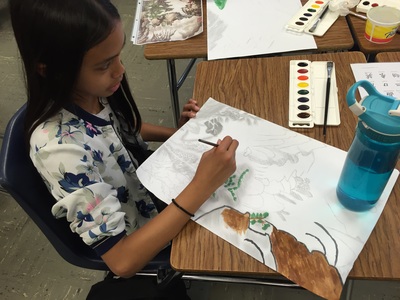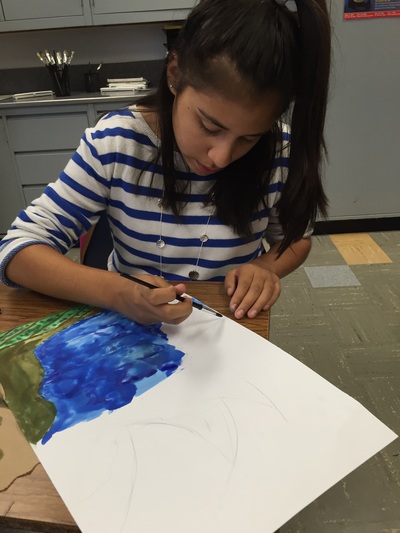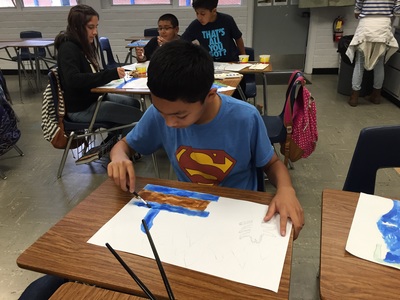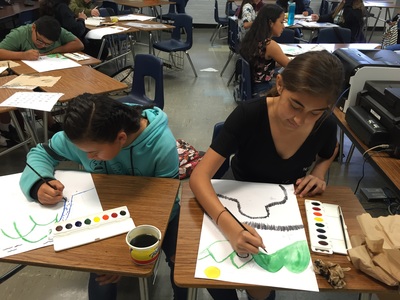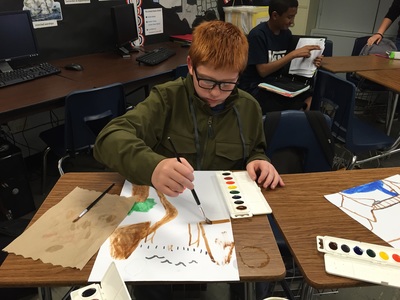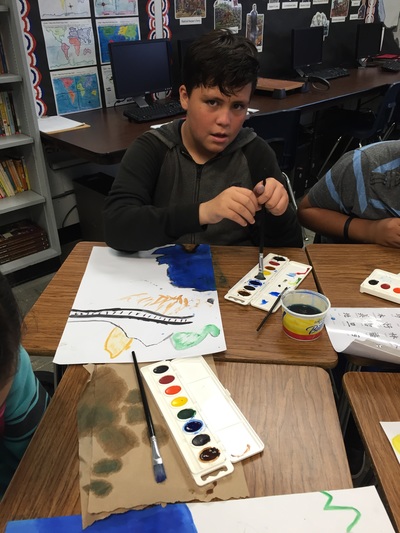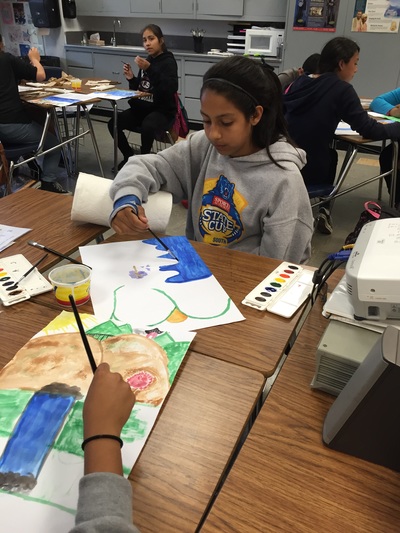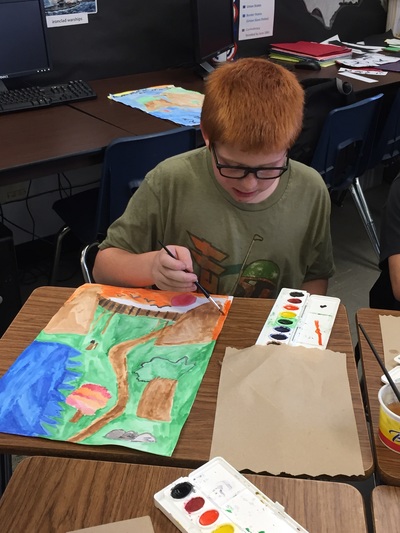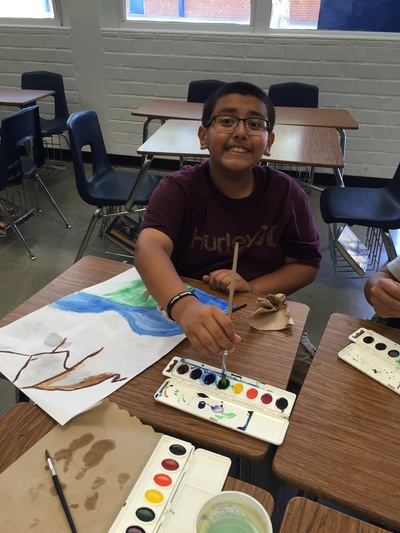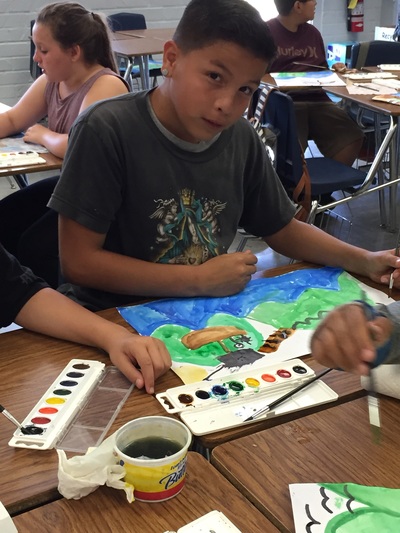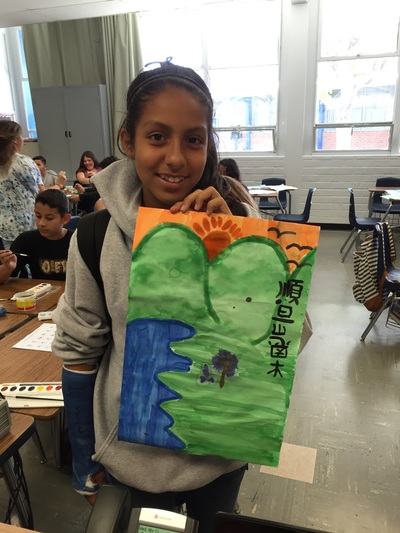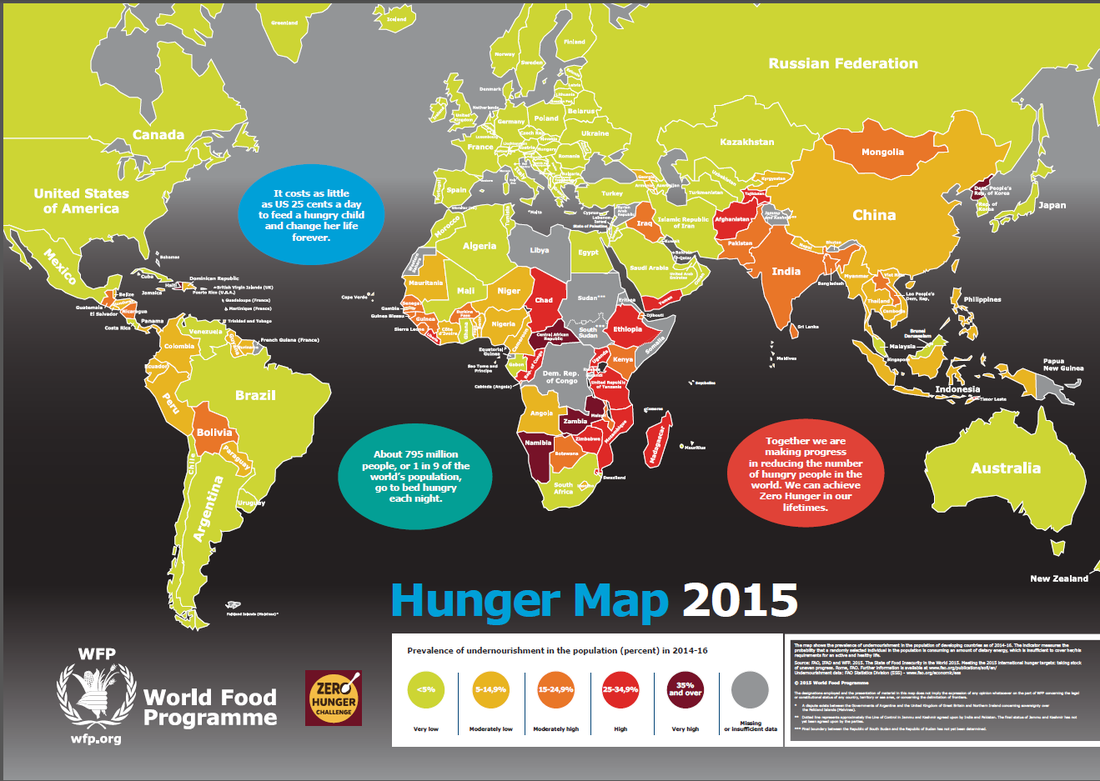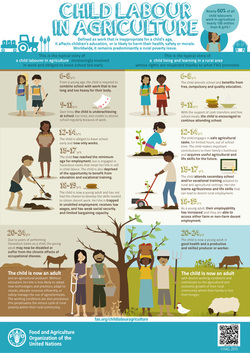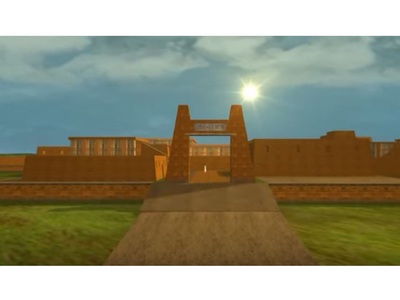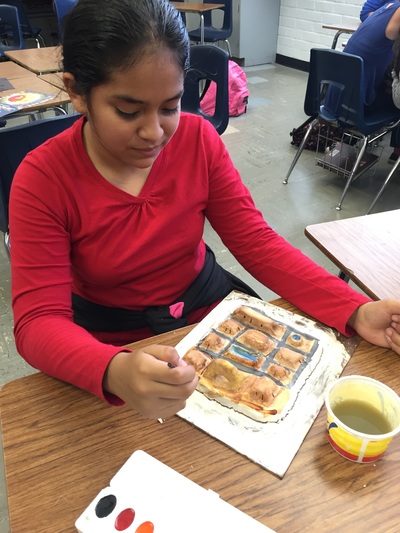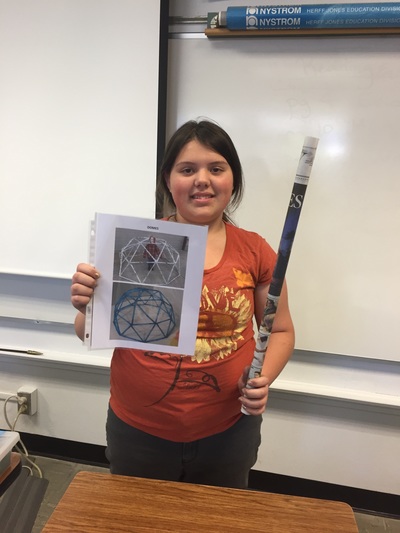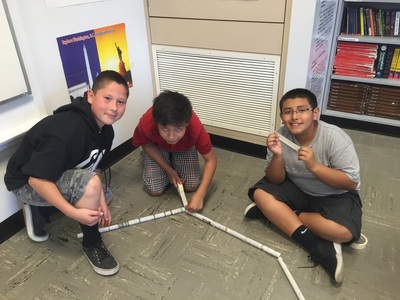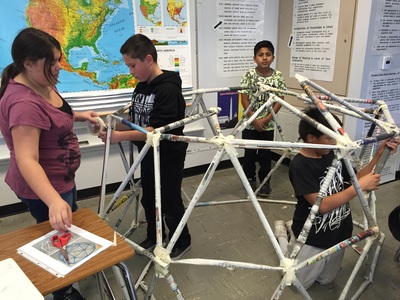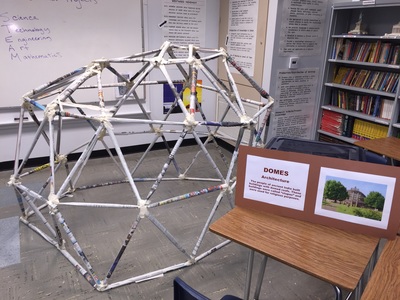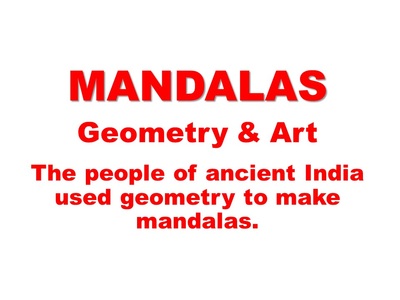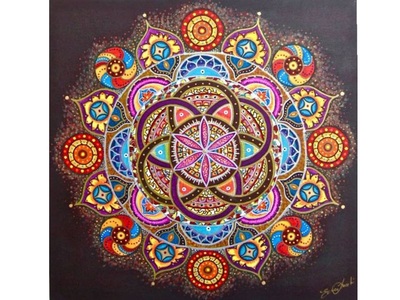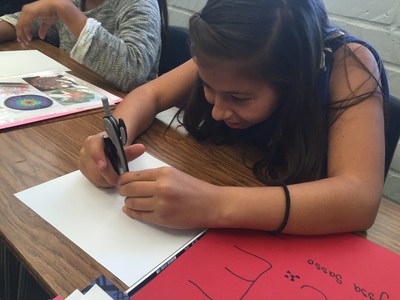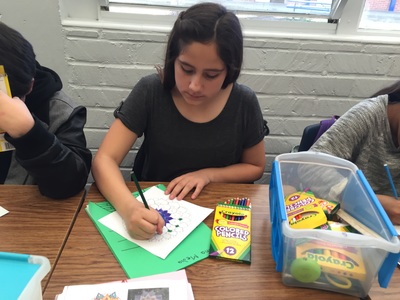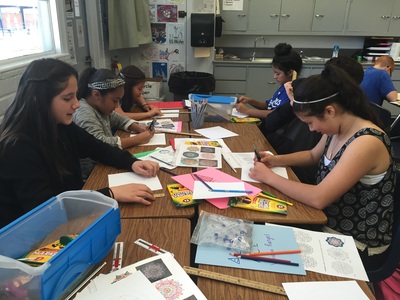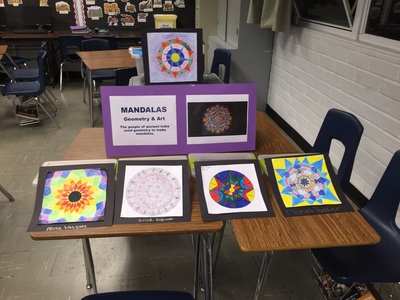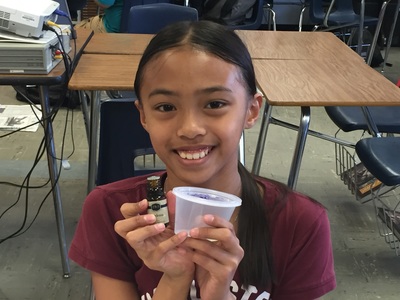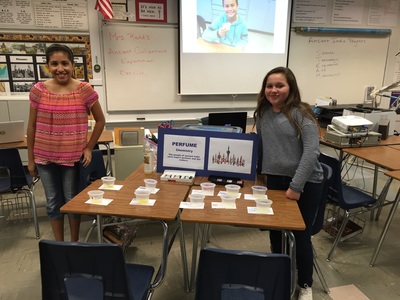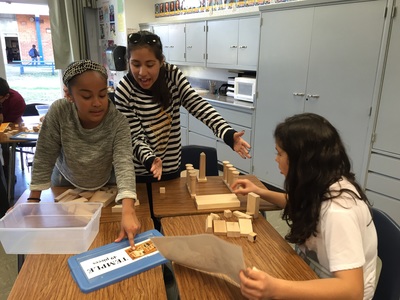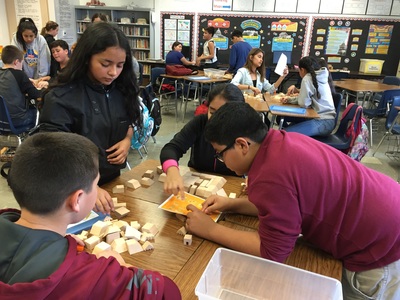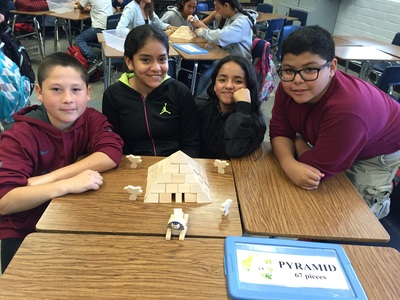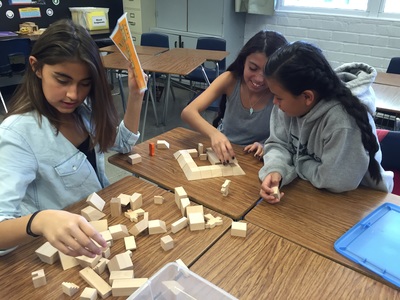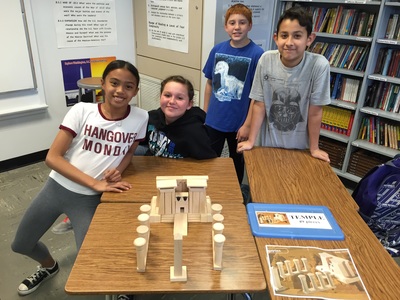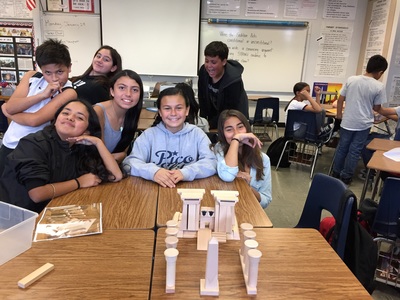6th Grade Ancient History Units
Click on the pictures below to go to the pages for each of the units covered in 6th grade Social Studies. Down farther you'll see some fun pictures of my ACE elective class (Ancient Civilizations Exploration)!
ACE Elective (Ancient Civilizations Exploration)
Greek Pottery
This class' Greek pots turned out so well! I wish I had had time to scan more of them, because they were truly amazing. Just like the ancient Greeks, we did a drawing of some aspect of Greek mythology or culture in the center and had fancy borders at the top and bottom. Greek pottery was usually done in "black figure," which means the pot was mostly terra cotta orange with black designs, or "red figure," which meant that that the pot would be blacked out and the design would be in the terra cotta orange.
Homer's Odyssey Play
Homer's other famous story, the Odyssey, tells of Odysseus' 10 year journey home from the Trojan War. Along the way he and his men faced monsters and misfortunes such as being trapped by a cyclops, being turned into pigs, etc. Since we were already warmed up from having performed The Iliad, The Odyssey was a smashing success and our actors performed really well. Dustin did a wonderful job as Odysseus and the pigs and cyclops were hilarious!
Homer's Iliad Play
One of the most famous myths from ancient Greece is Homer's Iliad, which tells the story of the Trojan War. We performed a play based on the story in class. I think our favorite part was when the priest was dragged into the sea by serpents (aka Jimmy :). Dylon, you did a great job as Laocoon!
One of the most famous myths from ancient Greece is Homer's Iliad, which tells the story of the Trojan War. We performed a play based on the story in class. I think our favorite part was when the priest was dragged into the sea by serpents (aka Jimmy :). Dylon, you did a great job as Laocoon!
Silk Road Simulation
The "Silk Road" was made up of a series of trade routes that connected Asia, the Middle East, Northern Africa and Europe. Goods, ideas, technology and religious beliefs were exchanged and helped each culture to advance. For the simulation, each group chose a region and set up a marketplace with goods to sell. Three team members stayed at the marketplace to negotiate sales with merchants from other countries, while one team member took a camel caravan and "flying money" and traveled from country to country buying goods. At each stop, traveling merchants were required to pick up a "Fate Card" which could either be good news, such as "Market Spike on Silk" which doubled their profits on silk, or bad news such as contracting the Bubonic Plague, getting bit by a snake, getting lost, running out of water, etc. all of which were real dangers faced by merchants on the Silk Road. Our traveling merchants were given technology cards to take back to their home countries, such as glass making from Rome and crossbow technology from China. At the end of the simulation, each group totaled up the goods they had purchased on the Silk Road as well as the money they had earned from sales and their technology cards. They filled out their Silk Road Merchant Ledgers to figure out how much money they made. It was good times, folks!
The "Silk Road" was made up of a series of trade routes that connected Asia, the Middle East, Northern Africa and Europe. Goods, ideas, technology and religious beliefs were exchanged and helped each culture to advance. For the simulation, each group chose a region and set up a marketplace with goods to sell. Three team members stayed at the marketplace to negotiate sales with merchants from other countries, while one team member took a camel caravan and "flying money" and traveled from country to country buying goods. At each stop, traveling merchants were required to pick up a "Fate Card" which could either be good news, such as "Market Spike on Silk" which doubled their profits on silk, or bad news such as contracting the Bubonic Plague, getting bit by a snake, getting lost, running out of water, etc. all of which were real dangers faced by merchants on the Silk Road. Our traveling merchants were given technology cards to take back to their home countries, such as glass making from Rome and crossbow technology from China. At the end of the simulation, each group totaled up the goods they had purchased on the Silk Road as well as the money they had earned from sales and their technology cards. They filled out their Silk Road Merchant Ledgers to figure out how much money they made. It was good times, folks!
Chinese Dragons
The ancient Chinese believed in many types of dragons, each of whom had unique characteristics. In contrast to the monstrous dragons envisioned by medieval Europeans, Chinese dragons were thought to be wise, caring and mischievous. Their job in ancient China was to act as guardians. They were often shown with a large pearl in their mouths, which was the source of their power. Over the centuries the beliefs about dragons' physical features evolved to include the following:
Head of a camel
Eyes of a rabbit
Body of a snake
Scales of a fish
Claws of an eagle
Paws of a tiger
Ears of an ox
Horns of a deer
Whiskers of a goat
Below are some of the dragons drawn by students this year.
Daoist Poetry
Daoist poetry focuses on nature and the peacefulness one experiences when surrounded by the beauty of nature. Here are a few of the poems that the students wrote this year.
Daoist poetry focuses on nature and the peacefulness one experiences when surrounded by the beauty of nature. Here are a few of the poems that the students wrote this year.
Chinese Brush Painting usually includes the following elements
Mountains
Water (lake, stream, waterfall)
Rocks
Trees
Bridges
Tiny people (usually only 1 or 2)
Nature is shown as large and powerful, man is shown small
Sometimes there is a poem about nature on the side
Mountains
Water (lake, stream, waterfall)
Rocks
Trees
Bridges
Tiny people (usually only 1 or 2)
Nature is shown as large and powerful, man is shown small
Sometimes there is a poem about nature on the side
Global Issues Infographics
As part of our unit on India, we learned about the issue of child labor in India today. From there we branched off into other global issues. Each group was given an infographic on a specific global issue, such as hunger, clean water, child labor, disease, etc. to read. They then starred the five facts that they felt were most important, wrote summaries and presented their topic to the class. Very informative!
As part of our unit on India, we learned about the issue of child labor in India today. From there we branched off into other global issues. Each group was given an infographic on a specific global issue, such as hunger, clean water, child labor, disease, etc. to read. They then starred the five facts that they felt were most important, wrote summaries and presented their topic to the class. Very informative!
STEAM Projects for Ancient India
Yesterday, we finished up our STEAM (Science Technology Engineering Art & Math) Projects for ancient India. Thanks so much to Brandi, Jenna and Arleth for presenting their projects to the incoming 5th graders and their parents last night!
Ancient Egyptian Architecture
Today, in our 6th grade ACE elective, we tackled Social Studies Standard 6.2.5, which focuses on the architecture of ancient Egypt. Each team built an Egyptian pyramid, which had directions, and a temple, which only had a picture. Way to go figuring out the puzzles, future architects and engineers!
Today, in our 6th grade ACE elective, we tackled Social Studies Standard 6.2.5, which focuses on the architecture of ancient Egypt. Each team built an Egyptian pyramid, which had directions, and a temple, which only had a picture. Way to go figuring out the puzzles, future architects and engineers!


